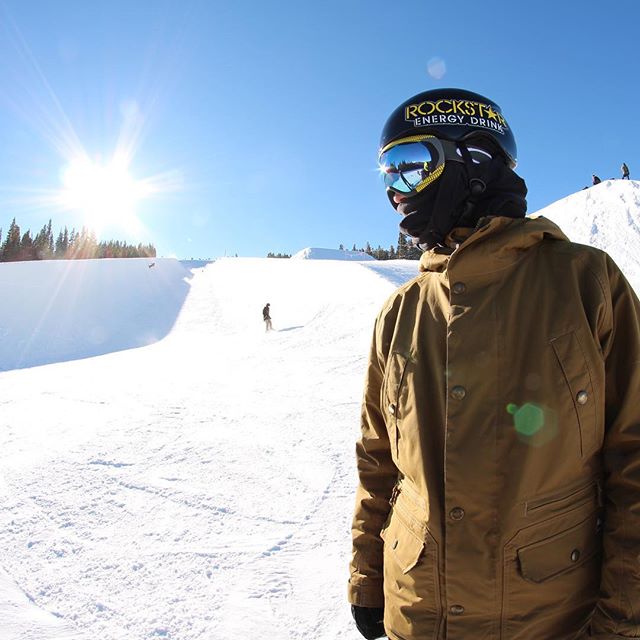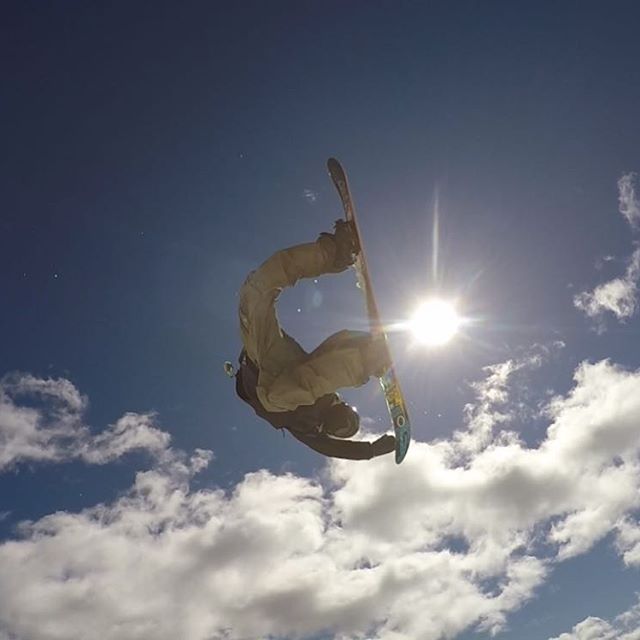What happens when your dream is to be the best snowboarder in the world and you get sidelined by debilitating back pain? Crashing at high speeds while learning to be a specialist in halfpipe and slopestyle took a toll on Jake Pates’s lower back.
Pates has been dreaming of being the best snowboarder since he can remember and with his accomplishments at 17 years old, he is well on his way. You can imagine how disappointing it was when his back pain became so intense he couldn’t train, let alone compete.
Pates started with skateboarding and skiing, but when he hit the slopes with his mom at 8 years old, he fell in love with snowboarding and made it his life goal to become a pro boarder. He said it wasn’t easy at first but then around year 2012, everything started to click. That was also the time he started doing big tricks and his back started to hurt. His persistence is admirable, and that is why we will likely see him at the 2018 Olympics in Korea. That is also likely why he overcame low back pain that sidelined him for months at a time.

“I had to take time off of training and couldn’t snowboard. I was pretty down and out about it but I stayed somewhat optimistic. My dream is to be the best and any obstacle that comes my way, I will work around it and give it my all.” After 4 years of having back pain, Pates is now entirely pain free and he credits his healing directly with strengthening and training the main inner core muscle, the Transversus Abdominis (TrA). Pates said, “My body wasn’t used to the force and crashing and it was getting traumatized. With my inner core not being awake, it was a big challenge and the back pain was pretty intense. It was very frightening.”
Ok, so you are not a professional snowboarder but it doesn’t matter because you have a spine and your inner core needs to be strong to protect it. This way, whether you are doing backflips in the pipeline or folding laundry, you can keep walking and doing normal day-to-day activities. Core strengthening is something that is rarely discussed by healthy adults that are simply looking to improve their body. Often times, healthy adults focus on traditional abdominal training which includes crunches, sit-ups and other forms of workouts that tend to isolate the “6-pack” muscles, the rectus abdominis. This type of training however, neglects to strengthen the inner core fully by not engaging and strengthening the stabilizing muscles responsible for protecting your spine. With proper inner core strength training, the benefits will rock your world- you will improve your posture, breathing, stability, power, balance and perhaps most importantly, you will develop the muscles that protect your spine and keep you from getting injured.
What is the difference between stabilizers and movers:
Your muscles are programmed by your central nervous system (CNS) to perform various roles to produce movements. Muscles can be classified as either ‘movers’ or ‘stabilizers’. Movers are what allow your body to move and stabilizers are what protect you before you move by stabilizing the joints and spine during movement. Both muscle groups are important to protecting the spine, movement and maintaining good posture. If you have weak stabilizers, this can lead to dysfunctional movement patterns which make you more prone to injury during workouts, sports, and even day to day activities. Poor posture and incorrect movements add pressure to the spine that causes wear and tear. This can cause crippling damage to the spinal discs and joints.
Research demonstrates that if you are experiencing low back pain, the stabilizer muscles, mainly the deepest abdominal muscle, the transversus abdominis (TrA), may not be engaging or firing in time to protect your lower back.
How core conditioning differs from muscle building:
It is possible to have six-pack abs and have a dysfunctional core because the movers are over-trained without training the stabilizers properly. But whether you have a six-pack or nothing even close, due to our predominant culture of sitting, your TrA is most likely not engaging in time to protect your spine. This is important to keep in mind for your core conditioning program because you can’t strengthen a muscle that your nervous system isn’t using or engaging. This can cause serious harm to your back. It leads to premature degeneration of the spine and increases risk for injury because of excessive wear and tear. This why your core program should start with building the muscles of your stabilizers first. After you strengthen your stabilizers and learn to engage them, you will protect your spine.
Core conditioning does more than build abdominal muscle because it promotes strengthening of stabilizing muscles as well, which helps you to gain functional strength.
How to find a core conditioning regimen that works for you:
While core strengthening programs can include a wide range of workouts that strengthen more than the abdominal muscles, you should start with a core conditioning program that strengthens your stabilizing muscles first.

“The Telespine program developed by Mark Barnes is so powerful and can really make a change in your life. Not only in the way you feel but also the way you act. You will have more fun in your life and overcome things you didn’t think you would be able to do.” Jake Pates
The best way to strengthen your core is to find a routine, preferably something you can do 2-3 times per week and make sure you are engaging the TrA properly before moving on to more advanced exercises. It’s best to hire a trainer or sign up for an online program with health coaching to get the guidance you need to ensure you are performing the exercises correctly and one that teaches you the proper steps, form and progression to give you a structured plan.
The science of core strengthening is fundamental for a healthy spine. If you have any questions on core strengthening please feel free to contact a Telespine health coach and ask away.
Follow Jake at @jakepates. He is sponsored by Rockstar Energy Drink, Burton Snowboards, Ethika, Oakley, Aspen Snowmass. Jake joined pro circuit when 15 years old. Has been competing with the big timers 2 years: 4th at Burton open in 2014, qualified first at Burton European 2015, 4th at Arctic Challenge 2014 and 7th at the US open in 2014. He is looking forward to the youth Olympic games in Norway and World Cup Stops in Cali in a couple of weeks.
References:
Hides J1, Stanton W, Mendis MD, Sexton M.The relationship of transversus abdominis and lumbar multifidus clinical muscle tests in patients with chronic low back pain. Man Ther. 2011 Dec;16(6):573-7. doi: 10.1016/j.math.2011.05.007. Epub 2011 Jun 8.
Hodges PW1, Richardson CA. Inefficient muscular stabilization of the lumbar spine associated with low back pain. A motor control evaluation of transversus abdominis. Spine (Phila Pa 1976). 1996 Nov 15;21(22):2640-50.
Monica Unsgaard-Tøndel; Tom Ivar Lund Nilsen; Jon Magnussen; Ottar Vasseljen. Is Activation of Transversus Abdominis and Obliquus Internus Abdominis Associated With Long-term Changes in Chronic Low Back Pain? Br J Sports Med. 2012;46(10):729-734. British Journal of Sports Medicine
